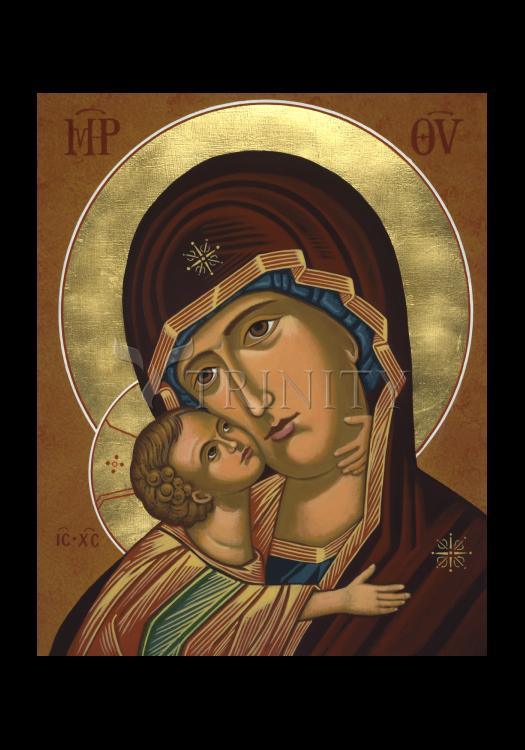No one knows the name of the iconographer. The icon was painted, however, in Constantinople by a Hellenic iconographer at some time during the 11th and 12th centuries. We know that it turned up in Kiev, then the capital city of Russia, in 1131, when Byzantium was being ruled by the Macedonian dynasty. Then in 1155 the icon was moved to the city of Vladimir, according to Paul Evdokimov, or, according to both Ouspensky and Losky, in 1161.
Because of its location in Vladimir, which was the religious capital at that time, it was called 'The Vladimir Virgin'. Later, Moscow became the religious capital, so the icon was moved there in 1395, where it has remained until now. It is housed in the Tretyakov Gallery in Moscow.
The icon is an inseparable part of the life of Russian history, particularly on account of miraculous interventions ascribed to it, news of which has always filled the Russian people with love for it. As we shall see, the great iconographers imitated it. It has survived many fires and all kinds of destruction committed by the rude Tartar invaders. The Russians acknowledge the favor of the Vladimir Virgin, which saved Moscow thrice from the Tartars: on the 26th of August, 1395, on the 23rd of June, 1480 and the 21st of May, 1521. In 1621, when the Poles attacked Moscow, belief in the icon roused blazing enthusiasm in her defense on the part of the Muscovites.
The icon was restored in 1514 with the participation of the iconographer, Bishop Barla'aam. Three times a year the Russians hold feasts in honor of the Vladimir Virgin, considered a sacred treasure of the Russian people. It is thought of as a Byzantine moon in the firmament of the Russian Church and the very best of its icons. After all, is the Russian Church not the magnificent daughter of the Church of Constantinople and her patriarch, Saint Photios the Great? So the loyalty of the daughter to the mother is magnificent in her unity with her of faith, heritage, the canons, traditions and rites of the Church, and her following of all these to the very letter, sometimes in a manner bordering upon exaggeration in an attempt by the daughter to imitate the mother to perfection. It must be added that the Byzantine heritage is deeply indebted to the Patriarchate of Antioch.




















